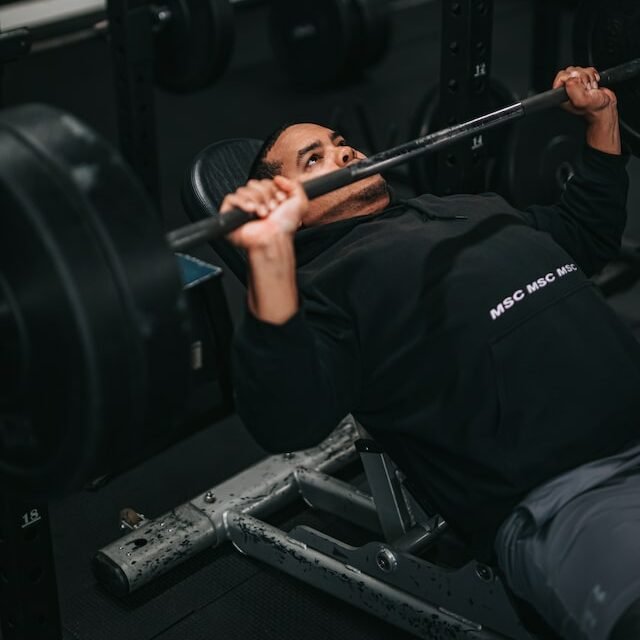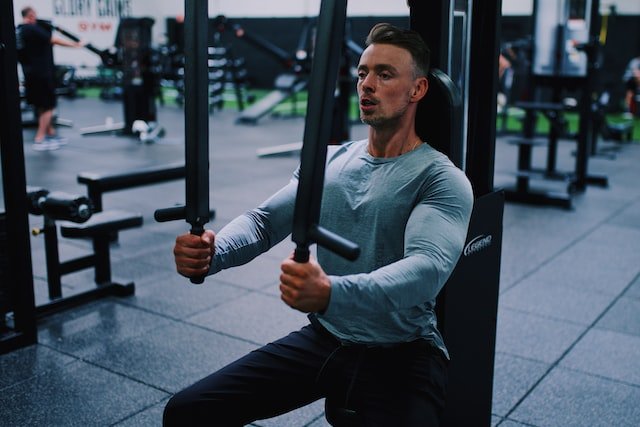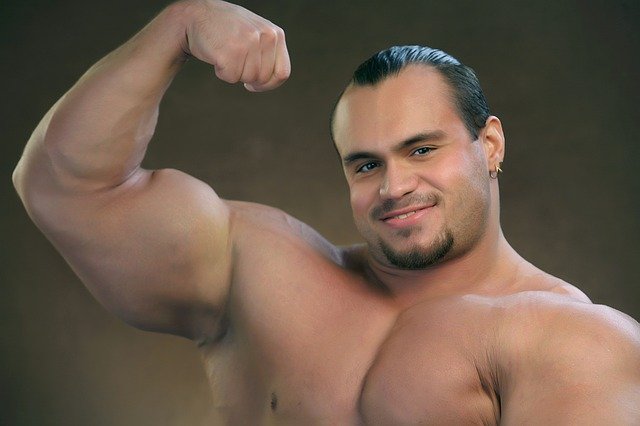
Why Do I Feel Chest Workouts In My Arms? 14 Factors For Rapid Progression
If you’ve ever felt chest workouts in your arms, you’re not alone. A lot of people experience this phenomenon, and it’s caused by a number of factors.
This can happen to anyone, especially newbies who have recently started working out. It’s also common among people for various reasons, which we will cover.
In this post, we’ll explore what causes chest workouts to feel in your arms and how you can prevent it from happening.
We’ll also discuss some tips for getting the most out of your chest workout. So, if you’re interested in learning more about this topic, keep reading!
Why do I feel chest workouts in my arms?
You may feel chest exercises in your arms for a few reasons. One possibility is that your arms are weak. If your arms are weak or weaker in comparison to your chest muscles, you’ll likely feel the exercise more there afterwards. This is especially common with exercises like the bench press. Another possibility is that you have poor form. This can happen if you roll your shoulders or don’t mix up your routine. It can also be caused by gripping the bar too tight or using the wrong grip width. If your ROM is restricted you may not feel the exercise in your chest as much. Furthermore, if you’re not engaging your core or if your bar path is incorrect, you may feel the exercise more in your arms. Let’s not forget that if you are trying to lift too heavy, your body will recruit other muscles to get the job done. Finally, it could be that the exercise is new to you. When you try a new exercise, your body is not used to it and you may feel it in your arms.
Let’s now look more in-depth at the reasons why you feel chest workouts in your arms and what you can do to fix the problem.
Gripping too tight
One of the reasons why you may feel chest workouts in your arms is because you’re gripping the bar too tight.
When you grip the bar tightly, your body recruits more muscles to stabilize the bar. In this case, your forearms and biceps because they are the muscles closest to the bar.
As a result, you may feel chest workouts in your arms more than you feel them in your chest. This can lead to fatigue in your arms and cause you to feel the exercise more there.
When you grip the bar or dumbbell, take a look at your entire arm on either side to see how much tension there is. There shouldn’t be any noticeable tension in your biceps or forearms.
If you see that there is, then you’re gripping the bar too tight and you need to loosen your grip.
To fix this, reduce the grip pressure on the bar until your arms are relaxed. You should only feel the majority of tension in your chest and shoulders when you do chest exercises.
As you know, when doing any kind of chest exercise your biceps and triceps are the secondary movers.
This means that you shouldn’t feel any significant tension in these muscles when doing chest exercises.
Are your arms weak?
Another possible reason why you’re feeling chest workouts in your arms is that your arms are weak. This can lead to fatigue and make it feel like the exercise is more in your arms than your chest.
If you find that your arms are weak, there are a few things you can do to fix the problem.
The first thing you can do is work on your form. Make sure that you’re not rolling your shoulders or flaring your elbows when you do chest exercises.
This will help to engage your chest muscles more and give them a better workout.
You should also look to increase the strength of your arms by doing exercises that target them specifically.
Some great exercises to do are bicep curls, tricep extensions, and shoulder presses.
Doing these exercises will help to increase the strength of your arms and make it easier to do chest exercises without feeling like your arms are doing more than they should.
Another thing you can do is mix up your routine. If you’re always doing the same exercises, your body will get used to them and they’ll become less effective.
So, make sure to change up your exercises regularly. This will help to keep your muscles challenged and prevent them from becoming too weak.

Arms take over the exercise
If you find that your arms are taking over the exercise, it could be because you’re using too much weight or your form is off.
Your body will recruit other muscles to help when you’re using too much weight. In this case, your arms will take over the exercise because they’re the closest muscles to the bar.
This can lead to fatigue and make it feel like the exercise is more in your arms than your chest.
To fix this, you need to use lighter weights and focus on your form. Make sure that you’re not rolling your shoulders or flaring your elbows when you do chest exercises.
Pin your shoulders back and keep your chest up. This will help to engage your chest muscles more and prevent your arms from taking over the exercise.
You should also focus on using a full range of motion. This means lowering the weight all the way down to your chest and pressing it back up until your arms are fully extended.
Doing this will help to ensure that your chest muscles are getting a good workout and that your arms aren’t doing more than they should.
Related: Why is bench press so hard?
Poor form
One of the most common causes of feeling chest workouts in your arms is poor form.
This can happen if you roll your shoulders or don’t keep your chest up. It can also be caused by gripping the bar too tight or using the wrong grip width.
Maybe you don’t roll your shoulders, but you have a great deal of tension in your shoulders that makes it difficult to keep your chest up.
This will limit the range of motion in your chest and make it more likely that you feel the exercise in your arms.
To fix this, you need to focus on your form. Make sure that you’re not rolling or tensing your shoulders when you do chest exercises.
Pin your shoulders back and keep your chest up. This will help to ensure that you’re using the correct form and that your chest muscles are getting a good workout.
If your form is off, it can lead to fatigue and make it feel like the exercise is more in your arms than your chest.
Grip width
Not only does your grip width determine how chest exercises feel in your arms, but it also changes the focus of the exercise.
When doing bench press, if you grip the bar too narrow, it will put more stress on your triceps. This can lead to fatigue and make it feel like the exercise is more in your arms than your chest.
Whereas, if your grip is too wide, it will put more stress on your shoulders and make the exercise difficult to control.
To fix this, you need to find a grip width that is comfortable for you. A good starting point is to grip the bar with your hands shoulder-width apart.
You can also experiment with different grip widths to see what feels best for you. Just make sure that you don’t grip the bar too narrow or too wide.
Is it new to you?
If you’re new to working out, it’s normal to feel chest exercises in your arms.
This is because your muscles are not used to the movement and they’re not as strong yet. It can take a few weeks for you and your muscles to get used to new stimulation.
There may also be some muscle imbalances through general wear and tear of life when you first begin training, which can make you feel some movements more in one area than another.
If you’re new to working out, focus on using lighter weights and perfecting your form.
Don’t worry, with time and practice, you’ll get stronger and the exercises will become easier. As you get stronger, you can gradually increase the weight and intensity of your workouts.
To fix this, you need to be patient and give your muscles time to adapt. Stick with it and eventually, you’ll be able to increase the weight and intensity of your workouts.
Not engaging scapula
When doing chest exercises, you need to make sure that your scapula is engaged. You will feel the exercise more prominently in your arms if it is not done correctly.
To engage your scapula, you need to retract them and depress them. This means that you need to pull them back and down. You should feel a squeeze between your shoulder blades when you do this.
If you don’t feel this squeeze, it means that your scapula are not engaged and you may find that you feel the exercise more in your arms than your chest.
To fix this, you need to focus on engaging your scapula when you do chest exercises.
Retract and depress your scapula before you start the exercise. This will help to ensure that your chest muscles are doing the work and not your arms.
If you find that you’re still not feeling the exercise in your chest, try doing a different exercise that targets your chest muscles.
There are a variety of chest exercises that you can do, so find one that works best for you and focus on perfecting your form.

Incorrect weight
If you’re not using the correct weight, it can make it feel like the exercise is more in your arms than your chest.
If the weight is too light, you may not feel the exercise in your chest at all. This is because your muscles aren’t being challenged and they’re not getting a good workout.
However, I doubt many people would have this issue, as normally the main culprit regarding weight is going too heavy…
On the other hand, if the weight is too heavy, you may find that you can’t control the movement. This can lead to poor form and make it feel like the exercise is more in your arms than your chest because your body is fighting to hold the weight and stabilize itself.
To fix this, you need to find a weight that is challenging for you, but that you can still control.
Start with a lighter weight and gradually increase it until you find one that is challenging but doable.
Related: Why do your arms give out before your chest?
Lack ROM
Without a full range of motion, it can feel like you’re using your arms more than your chest during the exercise.
This is because your chest muscles aren’t getting a good stretch and they’re not able to fully engage. As a result, you may find that you feel the exercise more in your arms.
To fix this, you need to make sure that you’re using a full range of motion, which is easier said than done if you have this problem.
What you can do is work on your shoulder mobility and functional fitness drills to improve your range of motion.
Doing things like foam rolling, stretching, and sports massage can help to improve your mobility.
For example, if you’re doing a bench press, make sure that you’re lowering the bar all the way down to your chest before pressing it back up.
If you can’t do this, try using a lighter weight, doing the exercise on an incline or using dumbbells to make it easier.
Poor bar path
An incorrect bar path can result in the exercise feeling like it’s targeting your arms more than your chest.
A good bar path should be a straight line from the rack to your chest and back up again. If your bar path is incorrect, it can put unnecessary stress on your joints and muscles, which can lead to injury.
It can also make the exercise feel more difficult than it needs to be and you may find that you can’t control the weight.
To fix this, you need to focus on having a good bar path. This means that you need to keep the bar close to your body and in a straight line as you lower it down to your chest.
You also need to make sure that you’re using a full range of motion, which means lowering the bar all the way down to your chest and pressing it back up until your arms are fully extended.
Not engaging core
If you’re not engaging your core, it can make the exercise feel like it’s in your arms instead of your chest.
This is because your core muscles are responsible for stabilizing your body and if they’re not engaged, your arms will have to work harder to stabilize the weight.
This goes for all the exercises you do, not just those targeting your chest because if your core isn’t engaged, your body will move around more and you won’t be able to control the movement.
To fix this, you need to make sure that you’re engaging your core muscles throughout the exercise.
This means that you need to brace your abs and keep them tight as you lower the weight down to your chest.
You should also focus on exhaling as you press the weight back up to the starting position as this will help to engage your core muscles.
Are you rushing? Slow it down and control the movement
If you’re rushing, it will make the weight feel like it’s in your arms more than your chest.
This is because you won’t be able to control the movement and you’ll find that your form starts to break down.
It’s important to remember that quality is more important than quantity when it comes to working out and rushing shows a lack of maturity and can lead to injury.
I know you can do exercises with explosion, but that’s different from just rushing the movement. You want to be able to control the eccentric (lowering) and concentric (raising) phases of the lift at all times.
You need to focus on doing the exercise slowly and with control. This means taking 2-3 seconds to lower the weight down to your chest and another 2-3 seconds to press it back up.
If you can increase the time your muscles are under tension, you should have no problems feeling chest exercises in your chest and not your arms.
Related: Why Do I Only Feel Chest Exercises In The Front Of My Shoulders?
Flex pecs at top of the movement
If you want to make sure that you’re feeling the exercise in your chest, you need to flex your pecs at the top of the movement.
This means that you need to squeeze your chest muscles together as you press the weight back up to the starting position.
Not only will this help to engage your chest muscles, but it will also help to improve your mind-muscle connection.
This is the connection between your brain and your muscles and the stronger it is, the better you’ll be able to target specific muscles.
If you’re flexing your pecs at the top of the movement, you should have no problems feeling the exercise in your chest and not your arms.
To get the most out of the mind-muscle connection, drop the weight and really take time to feel the muscles working. You should be able to see and feel your chest muscles contracting.
Another thing that can help here is getting someone to poke your pecs, or you give them a firm tap yourself, as this can help to send the message to your brain that you want to flex your pecs and you will also be able to feel the muscles that you are wanting to work too.
Final thoughts…
If you’re not feeling chest exercises in your chest, it’s likely that you’re doing something wrong.
It could be that your arms are weak, you have poor form, your ROM is restricted, or you’re not engaging your core.
You can fix this by making sure that you’re using the right grip width, mixing up your routine, and focusing on quality over quantity.
You should also make sure that you’re engaging your core muscles, exhaling as you press the weight up, and flexing your pecs at the top of the movement.
If you can do all of these things, you should have no problems feeling chest exercises in your chest and not your arms.
Have you experienced this problem? Let me know in the comments below.
If you enjoy sport and use CBD to help with your recovery in between gruelling workouts, then you are in the right place. Here at Sport CBDs, we train hard and recover the best way possible…
We have regular workouts (check out the YouTube channel), CBD news and CBD products to help you gain that edge!
If you wanted to check out the reputable CBD we have on offer here at the site, then please head to the Sport CBDs Store (CLICK HERE). We also do fitness clothing and yoga accessories too.
Until next time, all the best…


